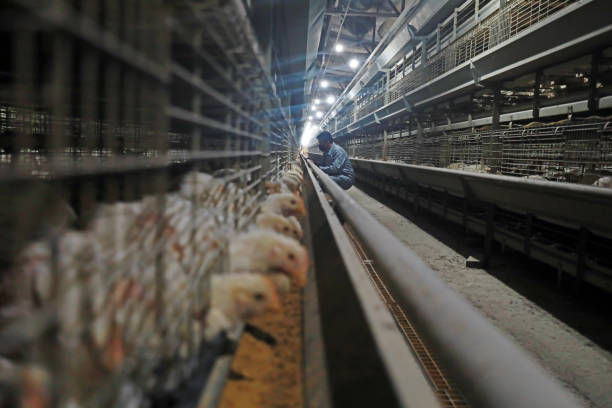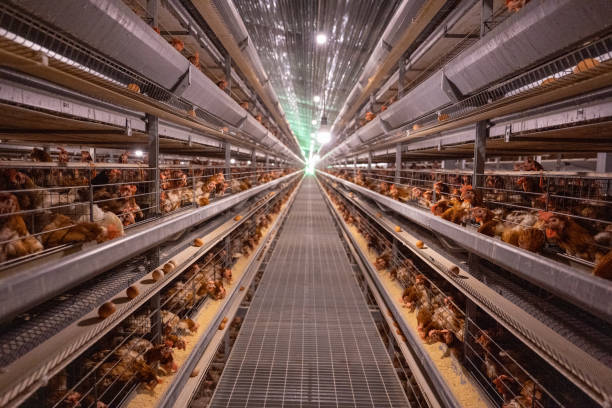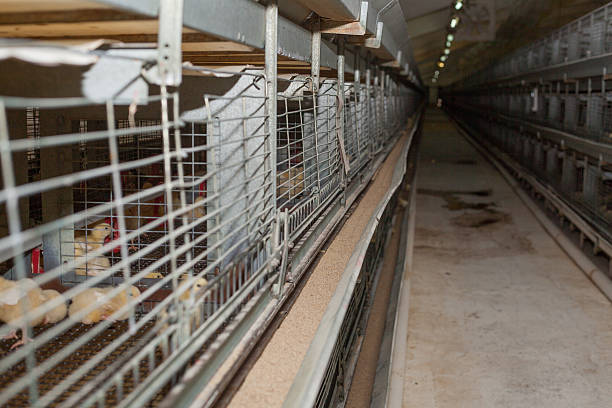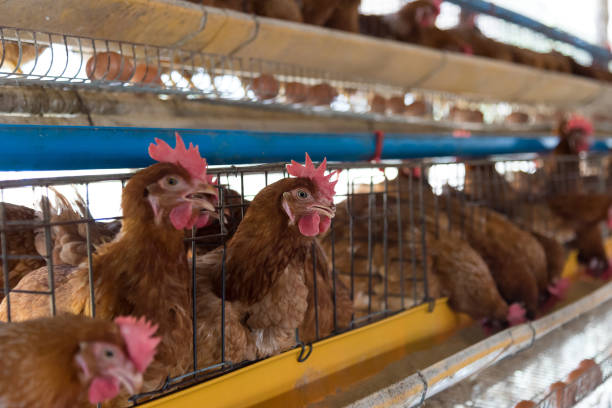Battery Poultry Cage for 10,000 Layers – Ghana Supply
Battery Poultry Cage for 10,000 Layers – Ghana Supply
Raising 10,000 laying hens efficiently and profitably is no small task — especially in a growing agricultural market like Ghana. One of the most critical decisions you’ll make as a poultry farmer is choosing the right housing system. That’s where battery poultry cages come in. Designed for high-density, large-scale egg production, these systems help maximize space, improve hygiene, reduce labor, and boost output. At Livi Machinery from Zhengzhou, we’ve been designing and manufacturing smart, durable battery cage systems since 2012. We’ve supplied complete solutions to farms across Africa, including many successful installations in Ghana.
Whether you’re expanding your current operation or starting fresh with a 10,000-bird layer farm, understanding what goes into a reliable cage system is essential. In this article, we’ll walk you through everything you need to know about setting up a battery poultry cage system for 10,000 layers — from layout design and equipment selection to installation tips and long-term benefits, especially tailored for Ghana’s farming conditions and supply needs.
Smart Layout & System Design for Maximum Efficiency
When setting up battery cages for 10,000 layers, the first thing to get right is the layout. It’s not just about fitting birds into a shed; it’s about creating a flow that supports feeding, egg collection, waste removal, ventilation, and easy access for workers — all while ensuring animal comfort and health.
A typical 10,000-layer battery cage setup requires around 2,000 to 2,400 square meters of floor space, depending on bird density and local regulations. Most modern farms use three- or four-tier A-frame systems arranged in rows. These are highly efficient because they allow farmers to house more birds per square meter without sacrificing care quality.


At Livi Machinery, we usually recommend dividing the 10,000 birds into several independent units — say, 5 sections of 2,000 layers each. This modular approach gives you better control over disease outbreaks, easier management during vaccination or cleaning, and flexibility in lighting and feeding schedules. Each section can have its own automatic feeder line, nipple drinking system, manure belt, and egg conveyor belt. If one unit has an issue, the others keep running smoothly.
For Ghana’s climate — which combines heat, humidity, and seasonal dust — proper ventilation is non-negotiable. We always integrate tunnel ventilation systems with cooling pads and fans into our cage setups. These help keep the house temperature below 30°C even during peak heat, reducing stress and improving egg production rates.
Another key consideration is orientation. In Ghana, orienting your poultry house east-west helps minimize direct sunlight exposure during the hottest parts of the day. Pair this with insulated roofing and shaded side walls, and you’ve got a much more stable indoor environment for your layers.
Durable Equipment Built for Local Challenges

Not all battery cage systems are created equal. Many cheap import models rust quickly, break under heavy use, or aren’t suited to Ghana’s humid tropical environment. At Livi, we build our cages using hot-dip galvanized steel — meaning the metal is dipped in zinc after welding. This gives it long-lasting corrosion resistance, so your cages stay strong for 15+ years, even in coastal areas like Accra or Takoradi.
Each cage is designed with rounded corners and smooth welds to prevent injury to the birds. The mesh size is optimized: large enough for droppings to fall through (keeping birds cleaner), but tight enough to support feet and discourage footpad issues. Our standard configuration includes nesting boxes integrated at the back of each tier, along with sloped egg belts that gently roll eggs toward a central collection point — safe from cracks and contamination.
Feeding and watering are fully automated. Our chain-feeders run precisely once every few hours, distributing the same amount of feed to every cage. Nipple drinkers ensure clean water delivery, reduce spillage, and cut down on litter moisture — a common problem in Ghanaian farms that leads to coccidiosis and respiratory diseases.
We also include a full-length manure removal belt under each row. Run it daily or every other day, and you drastically reduce ammonia levels, flies, and pathogens. This single feature improves both bird health and worker safety — and makes government inspections much smoother.
One thing many Ghanaian farmers love about our system? All components are pre-assembled, labeled, and packed neatly in containers. Once your building is ready, our technician team can be on-site within one week to guide installation — or we can train your local crew remotely. Either way, you’re looking at a turnkey solution delivered within 30–40 days from order confirmation.
Why Battery Cages Make Economic Sense in Ghana
Let’s talk numbers. A deep-litter free-range system might seem cheaper upfront, but over time, it costs more in labor, feed waste, disease losses, and lower egg yields. With a well-designed battery cage system for 10,000 layers, you’re investing in consistency, scalability, and profitability.
First, let’s look at productivity. Commercial laying hens housed in optimal conditions produce around 310–330 eggs per year. In deep-litter houses plagued by uneven temperatures, poor air quality, or parasitic outbreaks, that number can drop below 280. Over 10,000 hens, losing even 30 eggs per bird means missing out on 300,000 eggs annually — that’s nearly $60,000 in lost revenue at current prices in Ghana.
Labor savings are another big win. With automation in place, you can run a 10,000-bird cage farm with just 3–4 trained staff members. Compare that to 6–8 required for manual feeding, egg gathering, and daily cleaning in traditional systems. That’s half the payroll, every month.
Then there’s biosecurity. Battery cages elevate birds above waste, drastically reducing contact with bacteria and parasites. Combined with strict entry protocols (like footbaths and rodent control), this creates a far healthier environment — fewer sick birds mean less money spent on antibiotics and vaccines.
And don’t forget longevity. While a wooden or iron frame may degrade in 3–5 years due to rust and rot, our galvanized systems last a decade and a half with minimal maintenance. That spreads the initial investment over many more production cycles, lowering your cost per dozen eggs significantly.
Many of our clients in Ashanti, Eastern Region, and Central Region report breaking even within 14–18 months of startup — and that’s factoring in chicks, feed, and utilities. When done right, commercial egg farming is one of the most rewarding agribusiness ventures in Ghana today.
Getting Started with Your 10,000-Layer Project
If you’re serious about launching or upgrading your egg farm in Ghana, now is the perfect time to invest in a professional battery poultry cage system. The demand for eggs continues to rise across West Africa, and consumers increasingly value consistent supply, cleanliness, and traceability — all things a modern cage farm delivers naturally.
But choosing the right supplier matters. You want someone who understands local challenges: power fluctuations, transport logistics, spare part availability, and technical support. That’s why Livi Machinery doesn’t just sell cages — we offer full project support from concept to commissioning. Need help calculating shed dimensions? We’ll send you a blueprint. Worried about voltage compatibility for motors? Our engineers adapt systems to work with solar or generator backup.
We’ve already shipped dozens of container loads to Tema Port and handled customs clearance support for our customers. From Kumasi to Ho, our systems are operating successfully thanks to durable materials and expert guidance.
So here’s what you do next: think about your land size, water access, electricity source, and target production schedule. Then reach out to us with those details. Whether you email us directly, send a WhatsApp message, or fill out a quick form on our website, we’ll respond within 24 hours with a customized quote, 3D layout, and timeline.
Don’t gamble your hard-earned capital on outdated or substandard equipment. Build your 10,000-layer farm on solid foundation — with high-performance battery cages made for African farmers, by a company that’s been solving real-world problems for over a decade.





